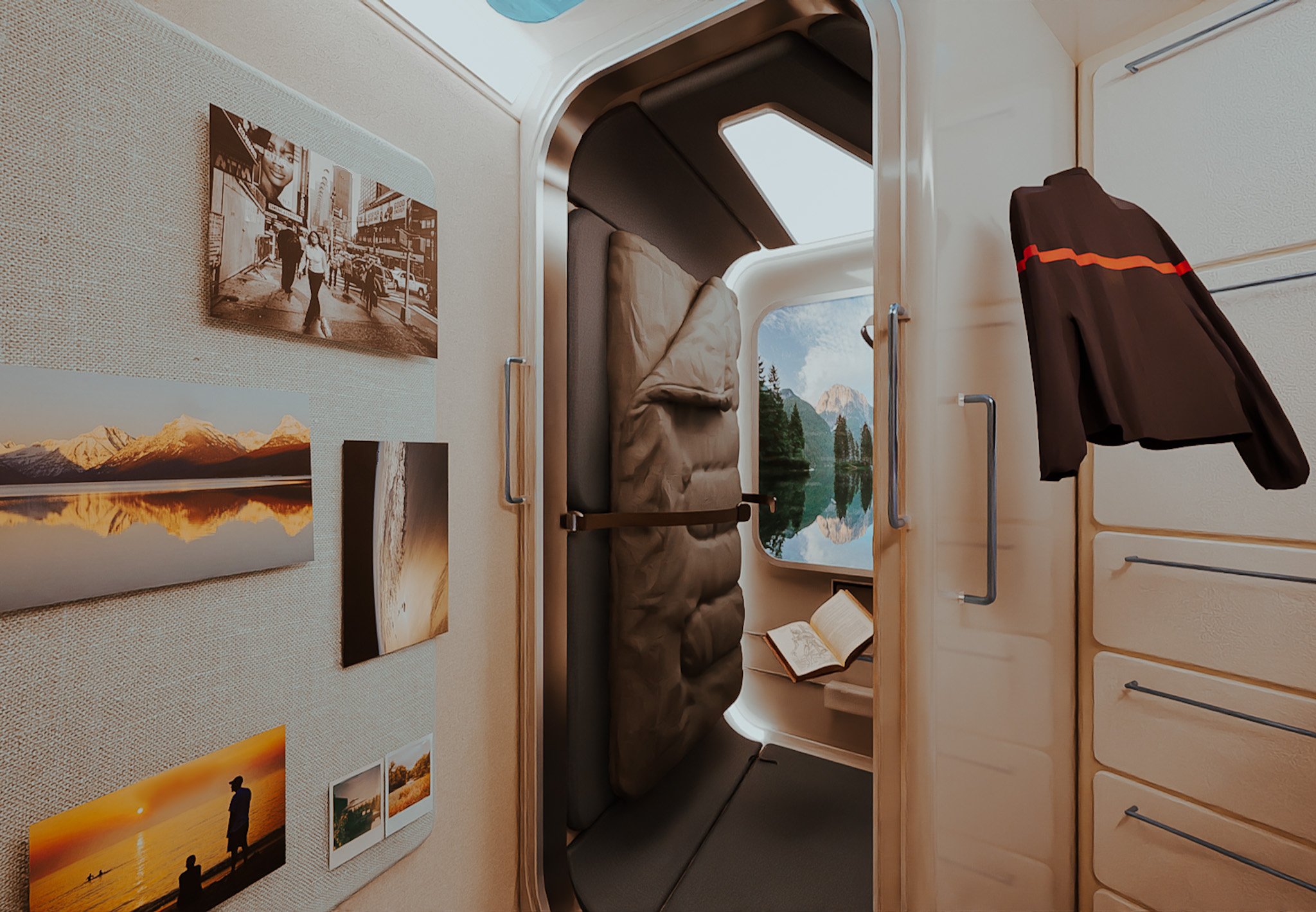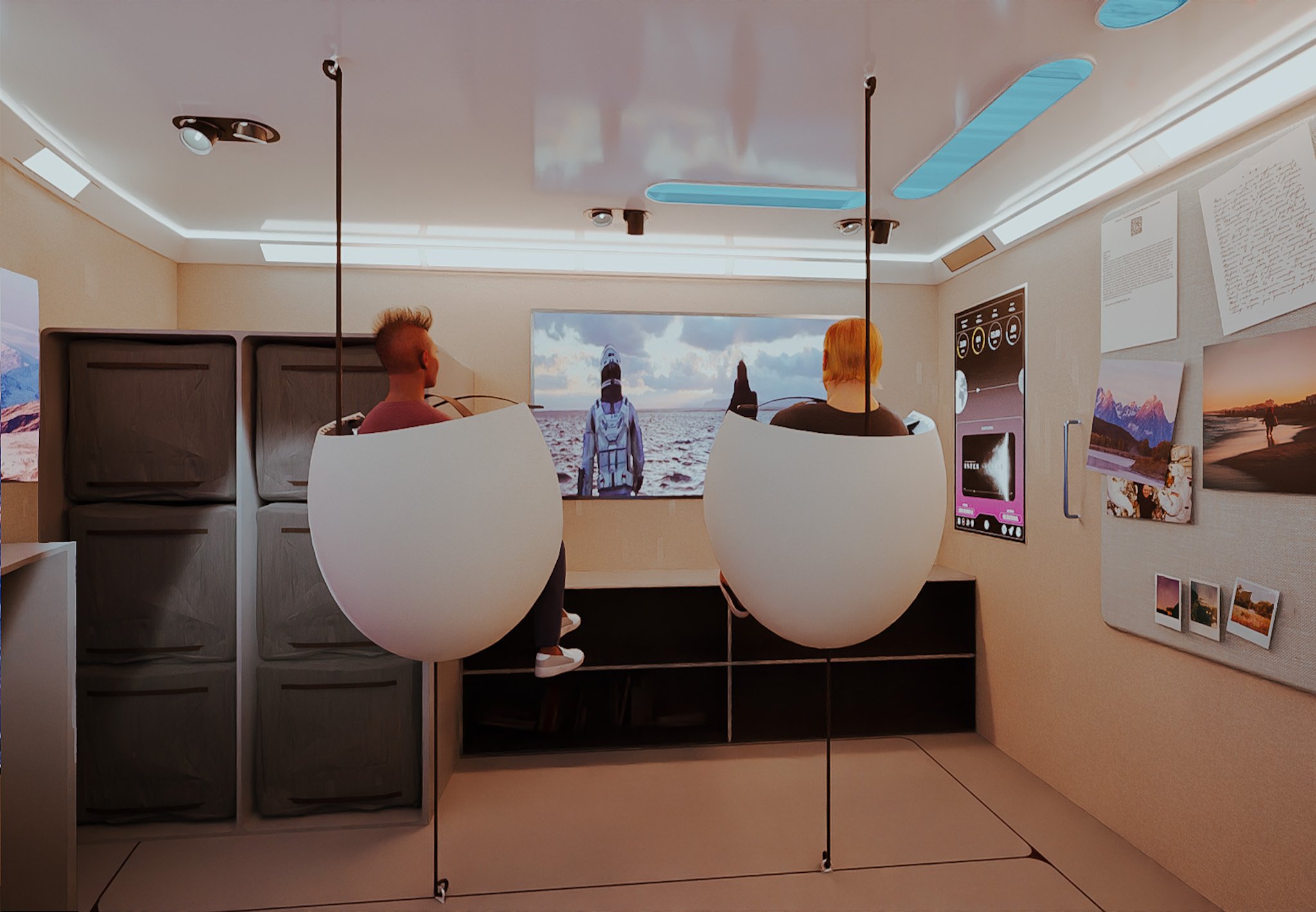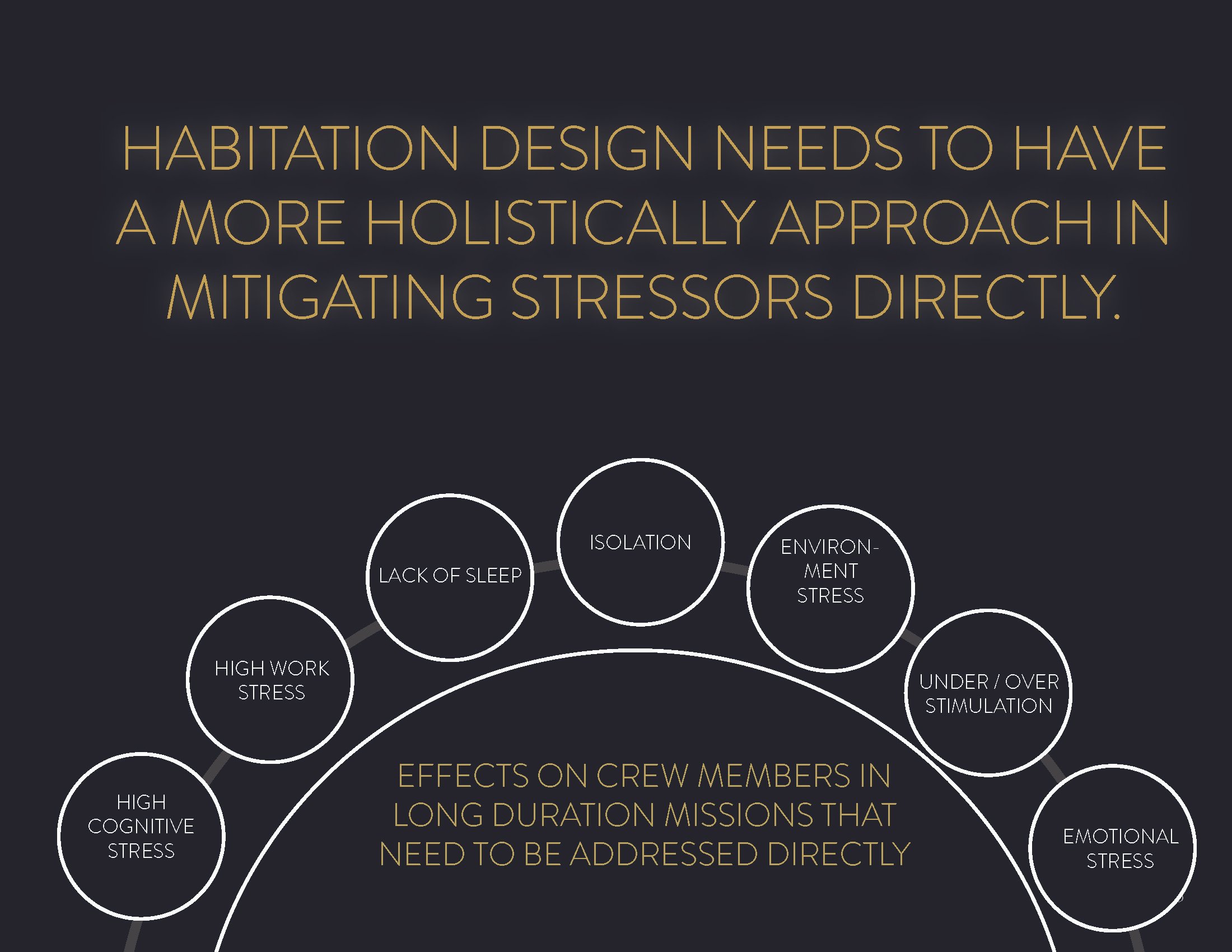Design Attributes to Support Astronaut’s Psychological Well Being in Long Duration Mission
-
Designing habitation for long duration missions has many challenges including: maintaining physical health, psychological health, operational functions and many more. This thesis is an exploration between the physical habitat design and psychological function of crew members. Its focus is on the visual elements implemented into the spaces, and integration of environmental features that can enhance the mental wellbeing of astronauts. The study examined and analyzed previous research done in analog missions on the effects of long duration missions on humans. While previous research looked at the effects of the mission on humans very little addresses the design of the habitats as a cause for the stressors. This psychological research was synthesized with research done on current transit habitat designs. The focus was on optimizing the transit spaces but often overlooked strategies to minimize psychological stressors. From the two research studies there are four design attributes that are being proposed to mitigate the psychological stressors in long duration missions. The recommendations aim to improve the quality of life for astronauts by mimicking earth’s key conditions needed to regulate the astronaut’s mental wellbeing. Lighting, virtual windows and skylights, display screens and open spaces all can be implemented i a variety of mission scenarios. The goal is to ultimately optimize the psychological wellbeing of astronauts in the in-transit period of the long duration of missions to ensure success of their missions.
-
Masters Thesis Fall 202
-
Programs
Rhino, Revit, Unreal Engine 5, Photoshop, Illustrator
Skills
Habitation Design, Space Systems, Human Performance, Psychological Research, Analog Mission Research, Human Interaction, Long Duration Mission














